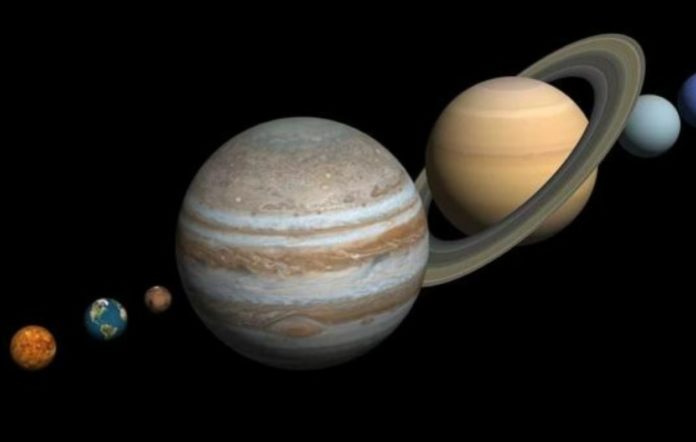More than 140,000 computer simulations of planetary systems featuring variations of these two gaseous worlds demonstrate that ‘pairs’ of giants like these can be favorable to the existence of planets like Earth.
Solar systems with pairs of massive planets, such as the one between Jupiter and Saturn, can be more friendly to life. Researchers from the University of Chicago came to this amazing conclusion after simulating more than 140,000 planetary systems, each one “equipped” with two gas giants. They found that in some of them, worlds like Earth couldn’t even exist, but in others, there were what could be called “ultra habitable systems”.
An Earth-like planet is deemed habitable when it is located close enough to its star to have liquid water on its surface, but far enough away so that the water doesn’t evaporate soon.
Of course, there are other elements that can influence a planet system’s habitability. One of these is the presence of massive worlds capable of both controlling their ‘brothers’ orbits and safeguarding them by keeping asteroids at bay. However, until recently, it was unknown how these giants may alter the orbit of a planet similar to our own and help keep it in the habitable zone of its star.
Earth as a model
In an article on the arXiv preprint server, Nora Bailey and Daniel Fabrycky explain how they simulated 147,456 planetary systems, each with a star like the Sun and two giant planets, to see which ones would allow a planet the size of Earth to exist. The gas giants in their simulations had masses ranging from 0.1 to ten times that of Jupiter, as well as orbits of various shapes and sizes. They were able to determine whether an Earth-like planet might live in these systems’ habitable zones, or if it would be destroyed by colliding with its parent star or the gas giants themselves, or if it would be ejected from the system entirely.
The simulations were run for 5 billion orbits of the innermost massive planet, and the relative habitability of each system was estimated. A score of ‘0’ meant that there was almost no likelihood of a habitable Earth-like planet existing there for any significant amount of time. A score of ‘1’ indicated that the system would be as excellent an Earth analog as one with no other planets interfering with its orbit. However, a score greater than one meant that the large planets would expand the habitable zone or aid in the stabilization of the Earth-like planet’s orbit.
Nearly 60% of the simulated systems received a ‘0’ or a ‘1’. Specifically, eight systems had planets similar to Jupiter and Saturn with habitability scores ranging from 0 to 0.93, but 253 of the simulated systems exceeded that limit, enhancing habitability conditions to the point of classifying as ‘super habitable.’
As explained by Bailey: The most habitable system of all was one with relatively low-mass giant planets, a tenth of Jupiter’s mass, placed relatively far out in the system, and with roughly circular orbits. This could indicate that planetary systems with two tiny gas giants are the best options for searching for life.
However, there is no certainty that this will be the case. Bailey claims that The number of variables at play is quite complex. The team completely disregard the process of planet formation in this work, despite the fact that we know that giant planets may be required for the formation of a terrestrial planet. Although not all of the effects that giant planets can have on smaller planets are fully understood, the work is an important first step in that direction.
Image Credit: Getty
You were reading: Did Jupiter and Saturn make the Solar System ultra-habitable?
